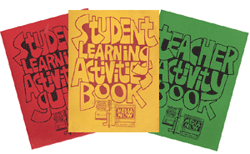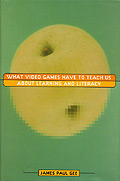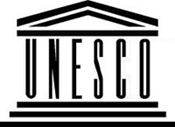Reading Room Search
Go here for complete Reading Room Article Index
Displaying 101 - 125 of 607
Respect and harmony in a multicultural society depends on people's ability to understand and recognize the difference between a generalization (a flexible observation) and a stereotype (a rigid conclusion). The goal of this activity is for students to recognize the role media play in creating and perpetuating stereotypes. Using gender as the subject of inquiry, students collect and analyze pictures of females and males from magazines and then write a generalization and a stereotype for each image. By creating their own generalizations and stereotypes students sharpen their awareness of the... Read More

Violence is a controversial issue that touches us all either through the media or in person. In the public debate about media in our culture, concerns about violence in the media often float to the top. While violence is a very common word, it is also a complex concept that contains many different insights and interpretations. In this activity students are required to "take a stand" about issues of violence in order to demonstrate different perspectives and understandings we all carry. A key facet of understanding is empathy and that requires learning how to value different points of view... Read More

A major aspect of core key question #3 is the idea that different people experience media messages differently. It is also true that similar groups of people tend to respond similarly to the same message. Because of this, advertisers often create different ads to sell the same product to different (niche) audiences. They spend large amounts of research time and money to learn about what appeals to people based on their gender, class, age, religion, ethnicity, health, family upbringing, etc. This information guides them to target ads that will appeal to groups with similar fantasies, fears... Read More

Through cooperative observation, analysis and discussion, students learn to recognize how the basic visual elements learned in activity 2A – lighting, camera angle and composition – are used in real-life media texts. As they compare and contrast different magazine covers featuring the same person, they begin to notice how visual techniques convey both obvious and subtle meanings. In this process, they discover many more visual techniques, such as body language, symbolism, color, etc., that influence feelings as well as ideas. For a practical application, students use their growing repertoire... Read More

The power of advertising is its ability to persuade and advertisers have a wide array of techniques to use in constructing their persuasive messages. This activity introduces ten common techniques that can be found in many ads. Students identify and deconstruct examples of these techniques in magazines and then create their own ads using some of these strategies. By combining analysis with production, students not only become conscious of the ways advertising works but also more active and critical with the advertising they encounter every day – whether on T-shirts, television, the... Read More

Brands, icons and symbols permeate our visual culture. Too often we assume that everyone interprets the symbols the same way. Yet, as we know from current events, symbols like the American flag can mean different things to different people. In activity 3A we learned that what the audience brings to a message is also part of the process of understanding the message. In this lesson, students analyze the symbols on the common $1 dollar bill (paper money is media too!), explore the variety of meanings in the symbols and then create their own money with symbols that are meaningful to them.... Read More

Because so much of today's communications, including the news, comes to us visually, it is critical students learn the basics of visual communication. This activity introduces three fundamental elements of visual language. As students photograph each other with different lighting, from opposite camera angles and in varied compositions they begin to see how these techniques influence the various meanings we can take from a visual message.
Download lesson plan # 2A
NOTE: This lesson plan is one of 25 cornerstone lesson plans for media literacy education available in Five Key... Read More

When we list types of media, we seldom include maps. But maps, as mass produced representations, are ideal for deeper explorations of media "constructedness" – for example, that mediated messages contain both truths and distortions, that choices of what to include and exclude can have political and social consequences, and that media cloaked in a scientific "aura of credibility" are seldom questioned. Through uncovering the bias and subjectivity inherent in maps, students puncture the false assumption that maps (or any media) are ever truly "objective."
Download lesson plan # 1E
NOTE... Read More
Five Key Questions That Can Change the World
CML publishes classroom activity guide with 25 core lesson plans for K-12 media literacy. by Jeff Share, Tessa Jolls & Elizabeth Thoman
"Where do I start?" is a cry often heard from teachers who would like to introduce media literacy in their classrooms, whether kindergarten or high school - but don't know where to begin.
Five Key Questions That Can Change the World is an innovative collection of 25 cornerstone lesson plans - five for each of CML's Five Key Questions of media literacy.
Developed by the Center for Media Literacy, it's a ready-to-go resource that will help you help your students build a firm foundation in the skills of media literacy! Features:
Easy-to-understand introduction for teachers on the Five Core... Read More

You asked for it: a PDF
version of CML's popular resource catalog! Called the "illustrated bibliography
of media literacy," the print version lets you see and compare all resources
on the same topic, whether video/DVD, classroom teaching tools or background
books. Organized in six main sections,
you can print out only the sections you need -- or the complete catalog.
Section
Page
Teaching In a Media
World
Resources about media literacy and how to teach it; research; technology
and learning
3 -7
Social Studies
News, democracy, politics; original source documents
8 - 11... Read More
Iowa Educators Pioneer Media Now Curriculum
Innovative high school program built around 50 hands-on 'learning packages' By Jill Jensen
As far back as pioneer days, Iowans have led the field in education. The first settlers sectioned the land and established one-room schools within a mile or two of most farmsteads. In the 1860s, Iowans chartered the first land-grant institution of higher learning, Iowa State University. Matching Iowa's pioneer spirit, the university's programs are open to all, practical in nature, and available to everyone in the state through extension and outreach.
A century later, Iowa educators again blazed trails in the emerging field of media education with a unique self-directed, module-... Read More
The convergence of media and technology in a global culture is changing the way we learn about the world and challenging the very foundations of education. No longer is it enough to be able to read the printed word; children, youth and adults, too, need the ability to critically interpret the powerful images of a multimedia culture.
Media literacy education provides a framework and a pedagogy for the new literacy needed for living, working and citizenship in the 21st century. Moreover, it paves the way to mastering the skills required for lifelong learning in a constantly changing world.
We... Read More
In line at the supermarket, you notice a photo on the cover of a news magazine. But it may not be what it appears to be. New technology has created the possibility to alter photographs, with precision and quality, in a completely undetectable manner. Digital manipulation of photographs is happening more and more often these days, usually going unnoticed and without comment.
Predictably, this technology is creating ethical dilemmas for both journalists and readers. Many journalists view themselves as objective recorders of reality and depend on the public's faith in the words and images they... Read More
The Branding Alphabet
An excellent high school activity by Carrie McLaren and built around Heidi Cody's art installation "American Alphabet." By Carrie McLaren
This high school activity, originally developed for 12th graders at the Berkeley Carroll School in 2002-3, helps students explore the influence that the cultural environment has on us.
Course Introduction, PowerPoint "Alphabet" exercise:
On the first day of class, I ask students to try and identify several plants and trees common in our Brooklyn neighborhood. They generally fail to name one. Then I show a slide of the alphabet comprised entirely from brand logos and they name almost all of them. The purpose here is to illustrate the invisible influence of our cultural environment.Open the... Read More
New Center for Media Literacy Comprises a 'Virtual Encyclopedia' of Free Tools and InformationFor Parents, Teachers, Students and Community Groups
NULL
Video Games and the Art of Learning Well
Review of James Paul Gee's provocative new book. by Kathleen Tyner
Video and computer games are so popular that the video gaming industry currently makes more money than the film industry. Yet until now, few scholars have seriously studied the learning potential of these games. In What Video Games Have to Teach Us About Learning and Literacy, James Paul Gee dissects the "mechanics" of learning and relates them to the processes involved in playing a good video game.
Gee believes that video game designers have much to teach us about learning environments. He wryly contends that game designers have thought deeply about the best way to design learning... Read More
We are, all of us, awash in media. Television. Movies. The Internet. Billboards. Newspapers. Magazines. Radio. Newsletters. Individually and collectively, we spend more time with more media than ever before — an average of 10.5 hours a day, about 25% of that time using two media simultaneously, according to a recent study of "Middletown, USA" by the University of South Carolina.
Children in particular have become media–obsessed. Another recent study, this one by the Kaiser Family Foundation, found that 68% of kids 2 and younger spend... Read More
God of Prime-Time Television, The
Television has portrayed flying nuns, angels, bishops and rabbis and now God himself. What do they say about the divine? By Teresa Blythe
What would you know about God if your only source of information were television?
It's a question worth asking this year, with no fewer than four new shows with theological implications. This week CBS takes its second shot at portraying God in three years with its heavily promoted "Joan of Arcadia," and next month Fox will introduce "Tru Calling" and "Wonderfalls." "Carnivale," on HBO, is the Almighty's cable debut.
From their founding to the late 1970s, America's TV networks channeled God almost exclusively through gray-haired, honey-toned men like Bishop Fulton J. Sheen, whose "Life Is... Read More
Safeguarding our Youth: Media Literacy and Violence Prevention
First government report to call for ‘broadbased media education' In July 1993, a national conference on youth violence prevention was convened in Washington, DC by:
The Department of Justice, Janet Reno, Attorney General
The Department of Education, Richard W. Riley, Secretary
The Department of Health and Human Services, Donna Shalala, Secretary
The following Report and Recommendations from the Working Group on Media is significant for its innovative "Key Concepts" overview of the issue of violence in the lives of young Americans. This resulted primarily from the participation of young people themselves who challenged the conventional wisdom that media... Read More

Young children form many of their ideas about the outside world from television. And what they're seeing is a world in which money rarely changes hands and few financial transactions are completed. At the same time, the advertisements that saturate children's shows seldom mention that the toys and candy cost anything. The following tips can help parents and teachers structure economic learning experiences from television:
When a character acquires goods or services without paying for them, point out the discrepancy. Young viewers might want to guess the cost of items or services they... Read More
New Eyes and Ears through Media Literacy
What does it take to bring a July 4 concert to the world? By Bill Walsh
We do not admire what we cannot understand. I forget who said that, but it's true.
The more people learn about the media, the more that knowledge changes our perceptions — changes how we look at an ad or read a newspaper, changes how we listen to music or watch TV ourselves. Anyone who's ever acted as a director — even on a three-camera, local access TV show — begins to watch TV paying attention to how professional directors work. Work a 12 channel sound board for just one night and you'll gain a new and abiding respect for the talents of those who do it every day.
And because I know very... Read More
UNESCO Convenes International Media Literacy Conference in Toulouse
Report prepared by Elizabeth Thoman, executive director Center for Media and Values, Los Angeles, CA
Overview of the Conference
In the summer of 1990, 180 delegates from 40 countries convened in Toulouse, France for an international colloquy on the future of media education worldwide. The conference was sponsored by UNESCO, the British Film Institute, and CLEMI (Centre de Liaison de L'Enseignement et des Moyen D'Information).
Most participants were media education teachers or national staff officials from European countries where media education is an established and well-developed field in both secondary and elementary public school systems. A number from Europe and Australia teach... Read More
Because many 21stcentury homes are equipped with more robust technology than most schools, there is often a significant disconnect between students' thinking and classroom demands. Students emerging from home electronic environments have experienced multimedia immersion, participating on many cognitive levels and in many media languages simultaneously. The dominant design of many classroom curricula, however, is to isolate a few senses and concentrate on them in depth, while ignoring others.
Read entire report.

